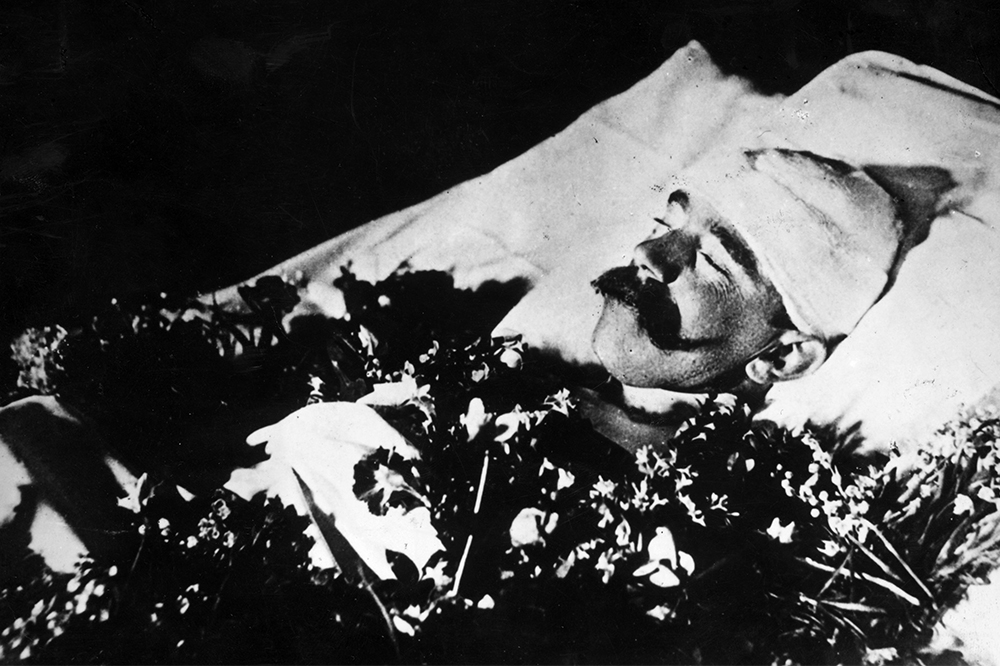It was the mother of royal scandalabras, as Walt Winchell might have said, and remains one of the greatest historical conundrums of all time. I refer to what became known as the Mayerling Affair: the sensational apparent murder-suicide of Crown Prince Rudolf of Austria, son and heir of Emperor Franz Josef and the tragic Empress Elizabeth, and his young lover, Baroness Marie Vetsera. Both Elizabeth and Rudolf happen to be collateral ancestors of mine, and I recently visited their gilded and frescoed rooms at the Hofburg Palace in Vienna, wondering what really befell the wretched prince, and, armed with new information, including personal letters never before published, I may (scoop alert!) be in a position to solve the Mayerling mystery once and for all.
Empress Elizabeth refused to meet Queen Victoria on the grounds that she was disgustingly overweight
A troubled family background foreshadowed the violence that was to occur on a winter’s night in 1889. Elizabeth was born into the Ducal House of Bavaria, Germany, in 1837. Her father, Duke Maxi, was considered mildly insane, and sent to live apart from the family after committing the social error of shooting off guns in the dining room while important guests were present. Elizabeth’s mother, Duchess Ludovika, was the aunt of the new emperor of Austria, the young Franz Josef, the world’s greatest catcheroo. It had been agreed he would marry Elizabeth’s elder sister, Helene, but when the young swain saw the 16-year-old Elisabeth, it was a coup de foudre.
Elizabeth, according to my great-great-grandfather Emil, was the swan of all time, with verveine eyes, skin like moonlight and chestnut hair to her knees. She came of age at the same time as the medium of photography and happened to be the subject of the first paparazzi photo. Women wanted to be her, and copied her habit of wearing a face mask of raw mutton, which must have alarmed Austrian husbands. The empress also evinced a strange horror of fat people, refusing to meet Queen Victoria on the grounds that she was disgustingly overweight.
But Elizabeth’s greatest trial was yet to come. Her beloved son and heir to the throne became involved in the ‘scandal of the century’, which subsequently inspired Hollywood movies, plays and a somewhat histrionic ballet. Rudolf had grown into an Alcibiades reborn with a crise de foie in more ways than one; he was an alcoholic and drug user who detested his father. Despite – or because of – his marriage to the sensible Belgian crown princess Stephanie, Rudolf had a series of mistresses, some of whom he would suggest commit suicide as proof of their love (his offers were understandably rebuffed). Then, in 1889, early one wintry morning when the moon had barely left the sky, Rudolf was found dead at the Imperial hunting lodge at Mayerling. Similarly unalive in the same room was his current lover, Marie Vetsera. She had been shot, and it was thought that Rudolf had, within seconds of killing her, turned a gun on himself. The accepted version is that Franz Josef ordered his son to give up Marie and return publicly to the side of his wife. Rudy persuaded his besotted mistress to agree to a suicide pact, which was then carried out. He was 30 and Marie was barely 17.
There is now a church on the site which, when I visited, seemed to whisper of footsteps past
In my family, however, a different, and more titillating story has been handed down. Crown princess Stephanie insisted to another of my relatives that the brunette Marie was conniving, fiercely ambitious and anything but the suicidal type. She had had lovers before Rudolf, and hoped, as unrealistically as a six dollar bill, that the crown prince would divorce Stephanie and marry her. When he instead broke off their relationship, Marie begged for one last sojourn together at Mayerling. But the couple rowed. According to Stephanie, the furious girl waited until her royal lover had fallen asleep and then used a cutthroat razor to cut off his penis. Understandably peeved, Rudolf shot her, and then, after a considerable period of vacillation, shot himself.
This version of events is borne out by a hitherto suppressed account by one of Rudolf’s servants, buried in old Vienna police files. On gaining entry to the room, the man found Marie stiff and naked on the bed, in a semi upright position. It was clear she had died hours before Rudolf and that the crown prince had murdered her in cold blood, before finally killing himself at his writing desk on the other side of the room. Whether his penis was missing the servant tactfully didn’t say. The Imperial family, led by Franz Josef, engineered a cover-up of the affair and Mayerling was razed to the ground, brick by brick. There is now a church on the site which, when I visited, seemed to whisper of footsteps past.
The effect the tragedy had on Elizabeth was devastating. As for Rudolf, he was immortalised by my late friend Omar Sharif in the classic but inaccurate Hollywood film Mayerling and entered legend as the misunderstood prince who died for love. The truth, as I’ve discovered, was rather less romantic.






Comments